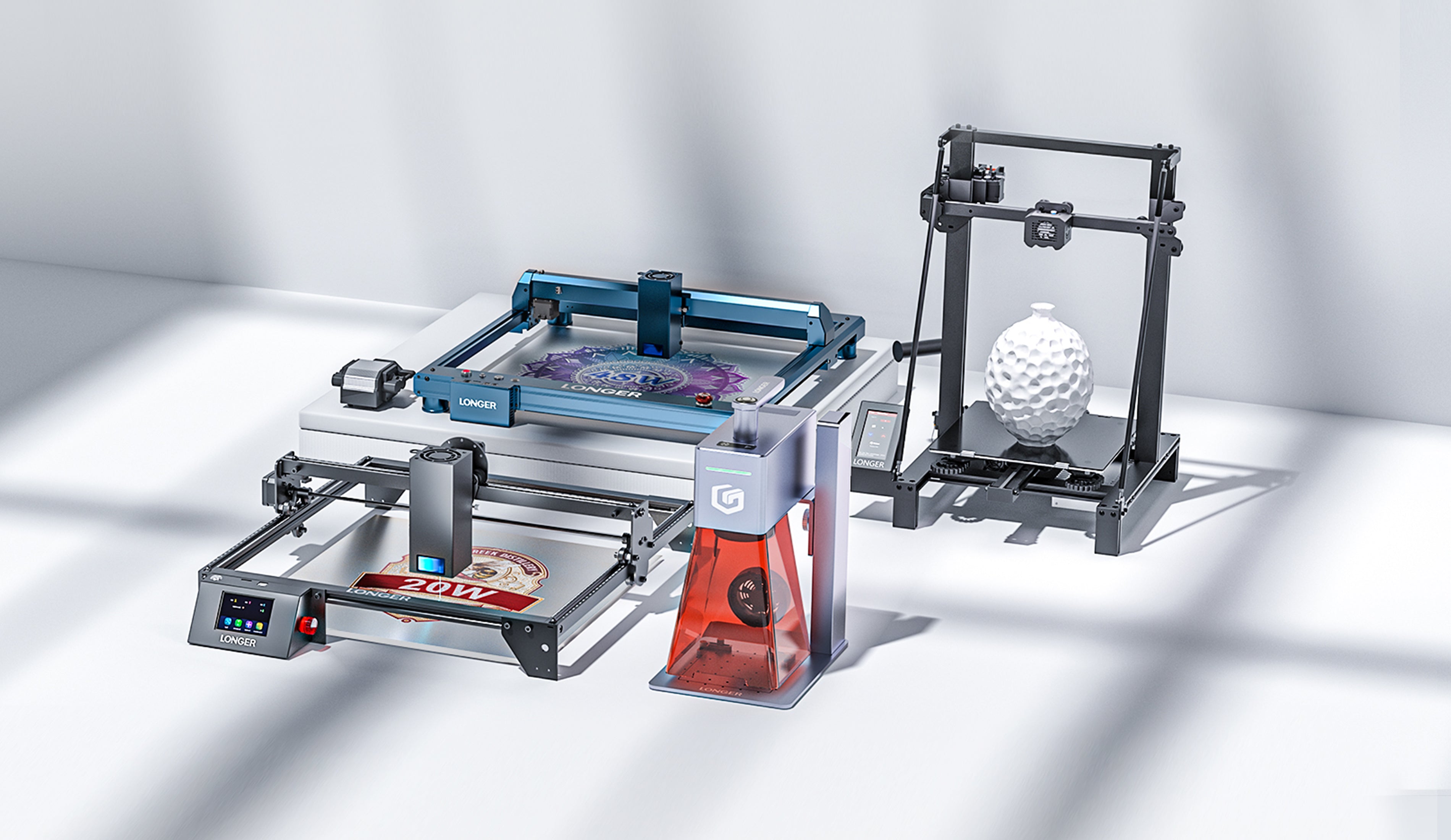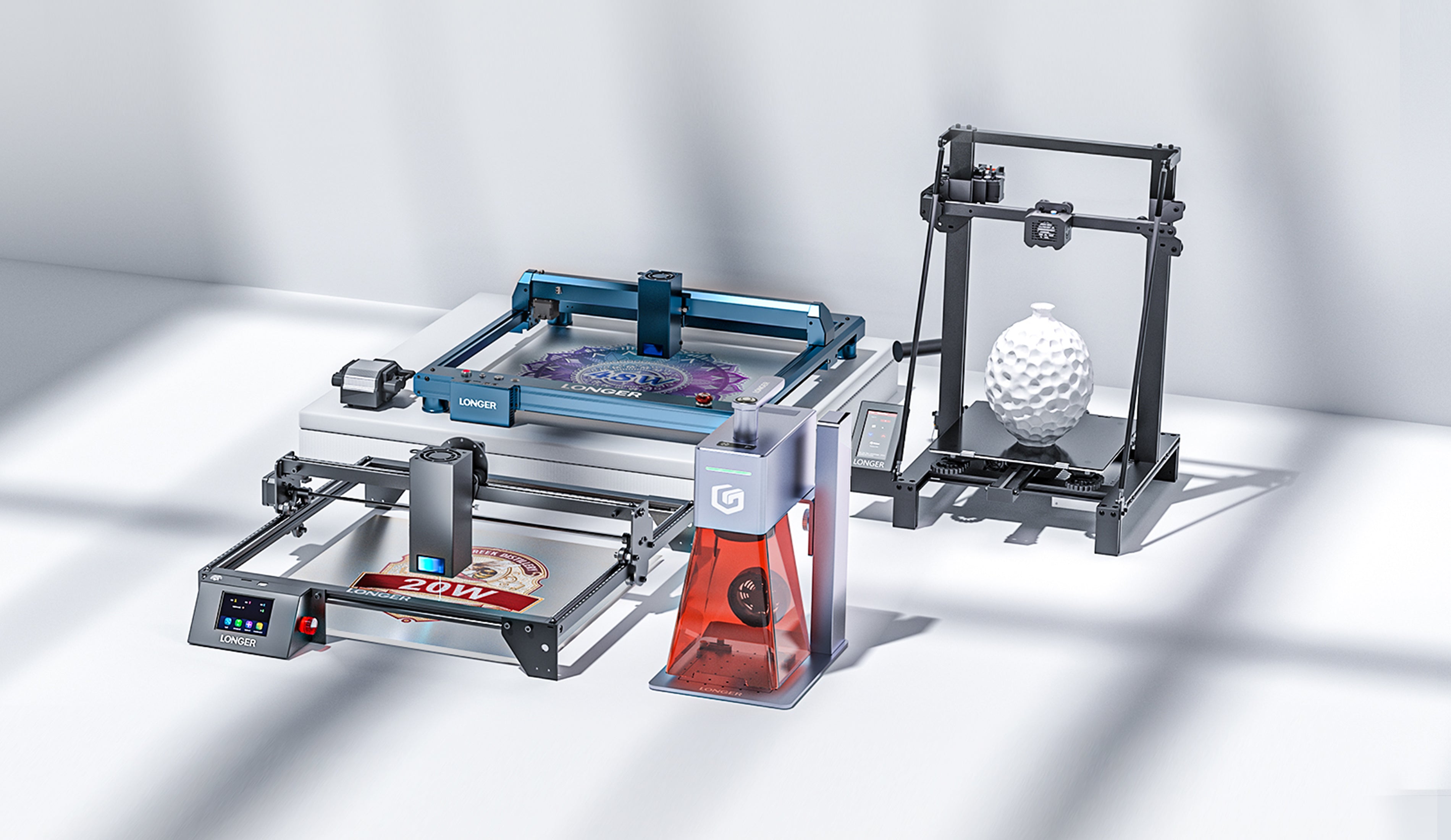Trending searches
Popular collections
Popular products
Cart ($0)
Cart ($0)





Longer Ray5 5W and Longer Ray5 10W allow you to engrave and cut different types of materials, quickly and easily. However, for each type of processing it is necessary to set different parameters regarding power and speed, precisely because each type of material reacts differently to the laser beam.
To have a reference, about what power and speed to adopt for each type of material, there is a fairly complete table accurately reporting the best parameters to use.

However, the table can only be understood as a general reference; in fact, assuming you want to cut the BassWood with Longer Ray5 10W, the recommended parameter is 100% Power & 350 mm/min Speed, but there are various types of BassWood, and each one reacts differently during cutting, so it is not said that these parameters are perfect for each type of BassWood, since some BassWood could be burned instead of simply cut or not cut at all.
In order to obtain the correct parameters for the type of BassWood you intend to cut, Lightburn has a powerful Material Test tool, which allows you to quickly determine the most specific and correct parameters. From the Lightburn home screen, select Laser Tools – Material Test, this screen will open:

First, set the Count value to 5 for Vertical and Count to 4 for Horizontal; Also, set Height and Width to 5.00 mm.
Since the recommended parameters for cutting the BassWood are 100% Power & 350 mm/min Speed, you can set a range between 100 and 500 mm/min for Speed and a range between 50% and 80% for Power (so as to avoid stressing the laser with 100% power).
Next, proceed with Edit Text Setting:

This screen is used to engrave the labels of the test table. Since it is an engraving, set 3000 mm/min Speed and 50% Power; Also, set Mode Fill.
Confirm by pressing OK.
At this point, proceed with Edit Material Settings:

In this screen you can set the method of processing the material; since it is a matter of cutting, select Mode Line, and possibly set Number of Passes to 1 or more.
Confirm by pressing OK.
Once back on the main screen, press Save Gcode to export the test file, copy it to the microSD and start testing on Longer Ray5.
When Ray5 has completed the job, reviewing the table will help you determine which parameters are best to set.
Similarly, if you want to proceed with an engraving test instead of cutting, open the Material Test screen. Since the recommended parameters for engraving the BassWood are 35% Power & 3000 mm/min Speed, set the testing range as shown in the image below:

On the Edit Material Settings screen, since this is an engraving, select Mode Fill:

Once back on the main screen, press Save Gcode to export the test file, copy it to the microSD and start testing on Longer Ray5.
When Ray5 has completed the job, reviewing the table will help you determine which parameters are best to set.
Note that, before exporting the Gcode, both for a cut test and for an engraving test, you can always select Preview, which allows you to see in advance how the final result will look.

Above is the introduction of parameter settings and material testing , hope it can help you. If you still have any questions during the operation, please visit our Support Page. Our knowledgeable staff is happy to assist you and your team with any questions.
The Longer Laser RAY5 Series is capable of engraving a wide range of materials including plywood, basswood, hardwood, pinewood, acrylic, kraft paper, stainless steel, aluminum alloy, ceramics, and more. Additionally, the Longer RAY5 can cut materials such as basswood, acrylic, bamboo, kraft paper, and more.
With its powerful engraving and cutting capabilities, it transcends boundaries to become the best engraving machine and the best laser cutter for a variety of materials. Seamlessly transition from a wood laser cutter to a metal laser engraver, or even become a master jewelry engraver. Discover boundless unlimited potential with the Longer Laser RAY5 Series.
!
